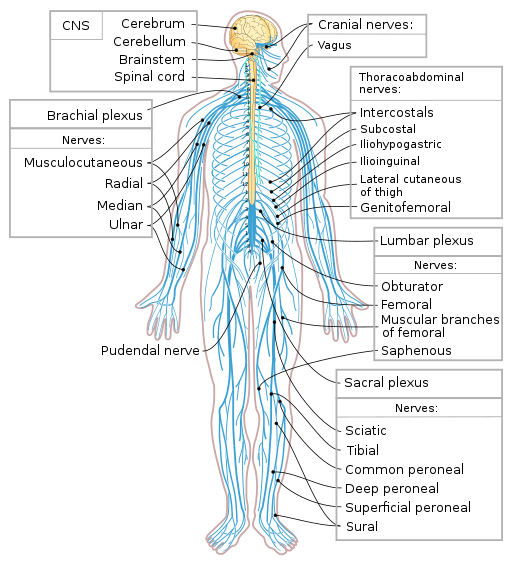2.3: The Nervous System
The nervous system can be thought of as the body’s command center and communication network; it processes information, relays sensory input, and coordinates actions by transmitting signals to and from other body parts (Ahmad, 2023). The nervous system is divided into the central nervous system (CNS) and the peripheral nervous system (PNS) (Figure 2). The central nervous system consists of the brain and spinal cord. The peripheral nervous system consists of nerves outside the brain and spinal cord and forms the communication network between the CNS and other body parts. The PNS has several subdivisions that we explore in more detail in the following section.

Text Attributions
This section contains material adapted from:
Biswas-Diener, R. (2023). The brain and nervous system. In R. Biswas-Diener & E. Diener (Eds), Noba textbook series: Psychology. Champaign, IL: DEF publishers. Retrieved from http://noba.to/4hzf8xv6 License: CC BY-NC-SA 4.0 DEED
Media Attributions
- Nervous system diagram © Wikipedia is licensed under a CC0 (Creative Commons Zero) license
Complex network of nerves and cells that transmit information between the brain and the rest of the body.
The portion of the nervous system that includes the brain and spinal cord.
All of the nerve cells that connect the central nervous system to all the other parts of the body.

